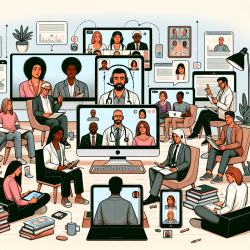The COVID-19 pandemic has drastically reshaped the landscape of mental health services, pushing the boundaries of traditional in-person consultations to embrace video consultations. The research article "Understanding and Accommodating Patient and Staff Choice When Implementing Video Consultations in Mental Health Services" provides critical insights into this transition.
For practitioners aiming to enhance their skills and adapt to this new modality, understanding the outcomes of this research is pivotal. The study conducted by Painter, Turner, and Procter (2021) explored a pilot project within a large National Health Service mental health trust, gathering data from both patients and staff.
Key Findings
- High Patient Satisfaction: Patients reported high levels of satisfaction with video consultations, finding them preferable to both home visits and clinic attendance. The convenience of avoiding travel and the intuitive software contributed to this positive feedback.
- Staff Concerns: Despite recognizing the benefits, staff expressed concerns about the impact on therapeutic relationships and the need for thorough training and support. They emphasized that video consultations might not suit all patients, particularly those with paranoia or technological suspicions.
- Practical Benefits: Video consultations saved patients time and money, and staff noted potential organizational savings as well. These efficiencies could be crucial in meeting the increased demand for mental health services post-pandemic.
Implementing the Findings
To successfully implement video consultations, practitioners should consider the following strategies:
- Comprehensive Training: Ensure staff receive in-depth training on the software and have access to ongoing technical support.
- Gradual Integration: Encourage staff to use video calls for non-patient activities first, such as team meetings, to build familiarity and confidence.
- Patient Suitability Assessment: Carefully assess which patients are best suited for video consultations, considering their comfort with technology and individual needs.
- Supportive Environment: Provide managerial reassurance and create a culture that supports the use of video consultations.
By addressing these areas, practitioners can enhance their skills and provide effective mental health services through video consultations. The journey may be challenging, but the potential benefits for both patients and providers are significant.
To read the original research paper, please follow this link: Understanding and Accommodating Patient and Staff Choice When Implementing Video Consultations in Mental Health Services.










